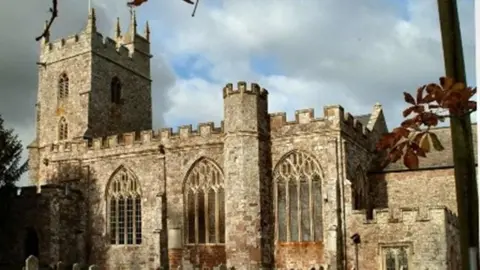 Google
GoogleA 17th century school which transformed into a restaurant is among a number of UK sites to have been removed from a heritage at risk register.
Formerly known as Horwood’s School, the Grade II-listed building in Barnstaple served as the borough’s first elementary school after being founded for poor children in 1659.
For the last several decades it had been a licensed eatery called The Old School Coffee House and was more recently turned into affordable housing after lying vacant for years.
Also in Devon, a 15th Century church at Silverton near Exeter has been added to the at risk register.
Heritage Minister Baroness Twycross said: “It is fantastic to see so many historical sites like this saved for communities up and down the country.”
The former school is one of 129 sites saved and removed from the list, published this week by government heritage agency Historic England.
Its spokesperson said many of them have been rescued with the help and commitment of local people, communities, charities, owners and funders, including The National Lottery Heritage Fund.
 Historic England
Historic EnglandHowever, 138 historic buildings and places have been added to the 2025 register amid concerns over their condition and future.
Among these is the 15th century Parish Church of St Mary the Virgin in Silverton near Exeter.
According to Historic England, the Grade I-listed building’s original honey-coloured oak ceilings “require urgent repairs”.
The church’s warden, Peter Smith, called the ceilings “remarkable”.
“Hidden behind lath and plaster for the past 200 years are in desperate need of conservation,” he said.
“Not only beautiful in their own right, they demonstrate rare wood joinery techniques employed in rural buildings back then”.
Claudia Kenyatta and Emma Squire, co-chief executives of Historic England, said: “The heritage we see all around us impacts how we feel about our local places.
“The annual Heritage at Risk Register gives us the opportunity to celebrate the many benefits of bringing our historic buildings back into use.
“The best way to protect our buildings is to reuse them, turning them into places of local connection and joy.
“The sites that have been saved and removed from the register this year really highlight the benefits of working together in partnership, and with communities, to create positive, sustainable change.”
